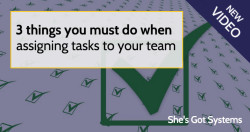Since 2012 the marketing buzzword that everyone has hung their hat on has been “authenticity” – defined as the art of being yourself and sharing openly through your business without hiding behind a facade.
It’s a great goal, we can all stand to have more honesty and less b.s., especially when it comes to our work. Too many times people pretend there’s nothing wrong, life is easy and it’s a charmed existence. So sharing struggles and challenges and being honest is a step in the right direction.
But how often does openness cross the line to leaving nothing private? Too often, if you read Facebook. I won’t post examples because everyone has a different idea of what should remain private and what’s fair game. But you’ve probably experienced scrolling through Facebook and thinking “TMI!”
While some people seemingly have zero filter and want the world to know their every thought, meal and decision, for most of us there’s a cringe factor when we share something that’s not authentic but simply oversharing.
Whether you like it or not, the way you portray your brand and business online and in person influences how you’re viewed by potential clients, investors, partners and your team. Having witnessed the fallout from a company with a “wide open” policy I can tell you that having no filter can be damning.
It’s not my job to tell you how to set your privacy controls.
The important thing is that you determine your own privacy standards and document them for your business and team.
It’s not enough to say “anything goes” because when you leave the door open, you have no control of what goes through it. Can your team share how much you charge clients? At what point you’ll stop collecting a past due balance? What you really think about your JV partners?
Like most things in your business, the only way to ensure uniformity in your policies is to create a system that you follow, without exception.
(It’s up to you if systems are restrictive or simply boundaries. I don’t hate stop signs when they keep idiots from hitting my car at a 4-way stop – the right boundaries in your business can prevent crashes too.)
Start with what you WANT to share by outlining the pieces of your business that are common knowledge or eligible to share. To make this a system, simply write a list that you can share with your team. For example,
Sharing Guidelines:
- Pay rate for VAs – Share with paying clients who would like a benchmark
- Structure of 6 month program what’s included – share with leads, clients and partners
- Referrals for accountant, lawyer and webmaster – share with anyone who asks, name and email only
- Open positions
As you’re creating this list you’ll come across some exceptions or information that you do not wish to share. Start a second list alongside the first:
Do Not Share:
- Unannounced bonuses we sent to clients
- Historical pricing for evergreen program
- My personal address and email
- Advertising budget and expenditures – unless approved by Owner
If any of these examples has sparked ideas on how you can handle sharing and privacy in your own business, then copy and paste this to your own system today.
(It’s sooo easy to think “I’ll do that later.” Let that thought trigger you to do it NOW.)
You know that we’ve changed as a culture when the question is “what do I not share on Facebook?” instead of “what do I want to share?” Take into account your personal brand, what information is relevant and uplifting, and how you show up authentically both in person and virtually.
Action Step: If you’re in our Frustrated to Freedom in 52 Weeks program, this is your “Privacy & Sharing” system. You may want to save this information on individual pages too, so when you document the bonuses you send to private clients you include a note “this information is not to be shared without permission as it is subject to change.”
For everyone, the easiest way to document this system is creating a Word doc and folder for BUSINESS SYSTEMS.

 3 things you must do when assigning tasks to your team
3 things you must do when assigning tasks to your team 5 Ways to Save with Your Operations Manual
5 Ways to Save with Your Operations Manual A Cure for Boring Systems
A Cure for Boring Systems